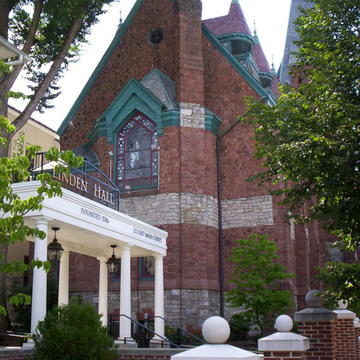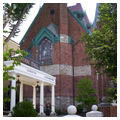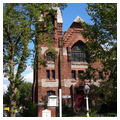Is there a more astonishing juxtaposition than this quirky Victorian church within a German eighteenth-century townscape? Built as a memorial to a student by her father, the chapel was designed by Hale, Philadelphia's “baddest” purveyor of nouveau riche excess. It was
You are here
Mary Dixon Chapel
1883, Willis G. Hale
If SAH Archipedia has been useful to you, please consider supporting it.
SAH Archipedia tells the story of the United States through its buildings, landscapes, and cities. This freely available resource empowers the public with authoritative knowledge that deepens their understanding and appreciation of the built environment. But the Society of Architectural Historians, which created SAH Archipedia with University of Virginia Press, needs your support to maintain the high-caliber research, writing, photography, cartography, editing, design, and programming that make SAH Archipedia a trusted online resource available to all who value the history of place, heritage tourism, and learning.







